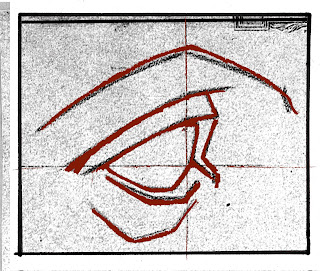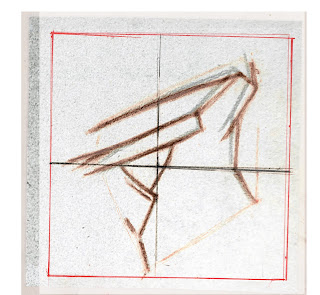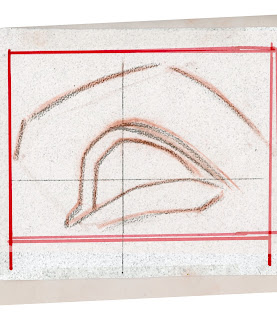In my endless desire to learn to draw EVERYTHING by TOMORROW (yikes!), I overloaded my daily practice. This time it was with a classic method I stumbled upon (I’m always stumbling upon something!) called the Bargue Plates.
I’m a big believer in “old school.” My thinking is, “Why reinvent the wheel?” Other people have figured out how to do this stuff so why not just learn from them and drastically reduce MY learning curve?
One of the skills I need to develop is improving my eye’s observations and the recording of those observations. Practicing the Bargue method seemed like a good way to learn.
Here’s some information from the Artists Network about the Bargue Plates:
This method, based on the teaching model developed by Charles Bargue, was widely used in the French Academy in the 19th and early-20th centuries, and centers around students copying instructional plates developed by the artist. The goal for the student is to improve his or her observational skills and learn to deconstruct complex visual information into large and small forms and shadows and light. Any artist can pursue the Bargue method on his or her own—all it takes is a set of reproductions, patience, and determination. Here are some tips for getting the most out of your self-directed Bargue exercises.
- Don’t get ahead of yourself, which will only lead to frustration. Start with a simple, high-contrast body part, and follow the steps in order. It won’t be long before you can tackle more challenging images.
- Remember that the whole idea with the Bargue exercises is to learn through repetition. Mistakes are part of the learning process and should never be interpreted as failure.
- While working on a drawing, use these helpful techniques to check your progress:
- Squint. Blurring your vision will help you gauge contrast between values.
- Turn the drawing upside down occasionally. This helps to provide a fresh perspective and allows you to see shapes more abstractly.
- Step away frequently to observe your drawing from a distance.
- Use a small “cut-out window” on a blank piece of paper to isolate areas and compare them to your copy.
- Have a friend critique your shapes.



I thoroughly enjoyed doing these exercises and I think you will, too! You'll feel a strong sense of accomplishment when your lines match the originals. Instead of having a “friend” critique my drawings, I scanned them and checked them in Photoshop. The transparency of the original was decreased so I could clearly see the difference between it and my drawing when printed.
But…
They’re also taking time away from my anatomy studies. So I stopped for now BUT I will return to them eventually.If you’re looking to improve your observational and recording skills, I recommend drawing from the Bargue plates. Go here to download all of the plates that have been conveniently resized to letter, legal and tabloid sizes.
Give it a try and tell me what you think of this exercise!
And if you like these blog posts, please leave a comment or become a follower. I respond to ALL of your comments. Thanks!

No comments:
Post a Comment